Snow-dusted Alps, vine-striped hills, elegant towns and some of the best food and wine on the planet – Piedmont has an embarrassment of riches and is a superb place to buy a home…
Words by Fleur Kinson. Photos by Getty Images
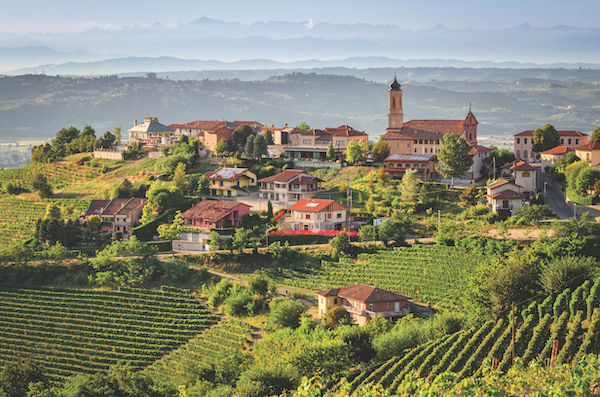
With some of the shortest travel times between Italy and the UK, Piedmont sits tucked up in Italy’s northwest corner, with France and Switzerland as its neighbours. It’s a clean, sophisticated and well-run sort of place, where everything works and life flows along in a contented and orderly fashion. It’s also a physically very beautiful part of the world. The buildings show the usual Italian flair for design and the landscapes lift the heart, with celestial Alps rising in the north and west and vine-covered hills rolling across the south.
This hilly south is worth special gastronomic mention, as it’s down here that many of Italy’s very best wines and foodstuffs are produced. Some people say it’s the finest corner of the whole world for eating and drinking. White truffles and Barolo wines are among the local specialities, but so is perfect cooking. Southern Piedmont has long had the greatest density of Michelin-starred restaurants of any comparatively-sized area on the planet. The Slow Food and Slow Cities movements both began in this area, which should tell you how highly Piedmont values the art of living well.
With its wonderful landscapes, culture and food, you might have expected Piedmont to be up there with the likes of Tuscany and Umbria in terms of foreign homebuyer interest. But Piedmont only really came to the awareness of international buyers a couple of decades ago, so its fame as a holiday home or retirement destination hasn’t had very long to build. Also, being further north than the much-loved central Italian regions, many would-be buyers have wrongly assumed that the climate might not be as good in Piedmont. But heed those vines on the hills! You can’t make some of Italy’s most highly-regarded red wines without the right kind of climate.
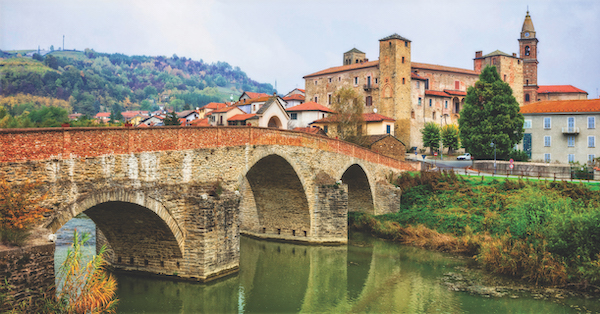
Reasonable prices
Another wrong assumption that might have deterred some international homebuyers is that Piedmont’s location in Italy’s wealthy north means its property prices must be sky-high. But they aren’t. Piedmont’s prices are very reasonable, and certainly lower than those of central Italian regions with similarly appealing landscapes, climate and lifestyle (namely Tuscany, Umbria and Le Marche). What’s more, especially because it’s situated in the prosperous north, Piedmont enjoys a particularly safe and stable property market. It’s a very good place to put your money.
So what of actual prices? Currently, you might expect to pay less than €100,000 for a village home or a small country house needing restoration in Piedmont. Small restored properties, meanwhile, start at about €150,000. Farmhouses needing a little repair work get going at around €250,000, while €500,000-€600,000 might get you a beautifully restored farmhouse with great views in a gorgeous location. There are also castles, wine estates, B&Bs and other large properties available. Meanwhile, if you’re looking for a lake – or ski-focussed home, one-bedroom apartments in converted period villas on Lake Maggiore might ask €150,000, and two-beds €200,000. Ski properties in Piedmont’s Alps come in a very wide range of prices, with some studio apartments asking less than €100,000 and some large three-bed flats going for €400,000 or more. Note that Piedmont’s tiny neighbouring Alpine region of Valle d’Aosta tends to be costlier.
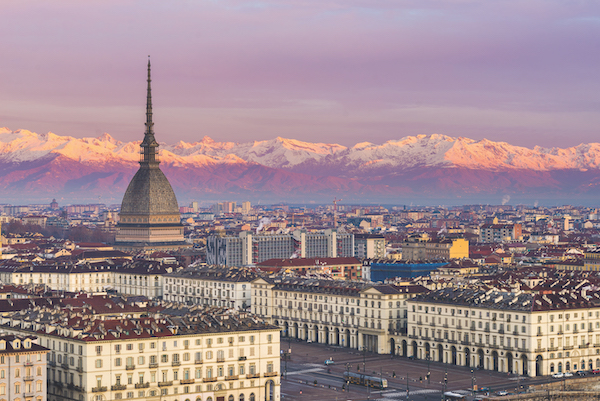
International buyers
Locally-based estate agents report that Piedmont’s market seems now to be recovering from the international recession that began around 2008 and that there is a return of international homebuyers in Piedmont these days.
Eli Anne Langen of Case in Piemonte says, “There are definitely more buyers and requests. UNESCO accolades and new DOCG designations for wines of the highest quality here are influencing the market even more positively than
I had expected. In Piedmont’s most attractive areas, we are seeing a slight rise in prices.”
Alex Edwards of Langhe Property concurs. “We haven’t seen such a large number of enquiries that turn into sales for a very long time – since before 2008, in fact,” he says. “Houses we’ve had on the market for two or even three years are now selling. It’s logical to conclude that with such an extraordinary amount of interest, demand will rise and prices along with it.”
Piedmont is blessed with great geographic variety, and you might like to know that the beautiful landscapes here have proven very appealing to discerning holidaymakers. Tourism has been going from strength to strength across Piedmont in recent decades, which is great news for any homebuyer who hopes to offer holiday rentals on their property when they’re not here enjoying it themselves. In addition to skiers and Alpine hikers, Piedmont exerts a strong pull on sophisticated, wine-loving gourmet types who love staying in a rural home with views of vines or perhaps somewhere in a chic little town with an inevitable clutch of wonderful restaurants. There are also visitor clienteles up on little Lake Orta and on Piedmont’s western shores of Lake Maggiore.
Obviously you’ll need to decide which of Piedmont’s several faces you want to enjoy most often, so let’s take a quick look now at the region’s physical arrangement. We’ve already mentioned that Piedmont’s north and west are dominated by the Alps, and it’s worth reminding ourselves what a truly stunning range of mountains these are. Rising steeply and suddenly from the landscape (thanks to the aeons-old tectonic collision that brought them into existence), the rocky peaks of the Alps are prefaced by pretty pasturelands immediately below. Sweet Alpine villages with flower-decked wooden chalets further beautify the area.
Moving southwards away from the Alps, and beyond the palm-fringed lakesides of Maggiore, Orta and others, Piedmont slowly levels out into bright, emerald-green rice paddies in the region’s central and eastern parts, before the land starts buckling up again across the south to form a lyrically beautiful place of fertile hills with expansive views.
It is this lovely southern swathe of Piedmont that has caused perhaps the greatest excitement for foreign homebuyers over the last two decades. It’s down here that the most famous wines are made and the gastronomy reaches its dizzying apogee. Farmhouses ringed by rolling vine-clad hills have been many a buyer’s fantasy, but smaller country houses and modest village homes have also been coveted.
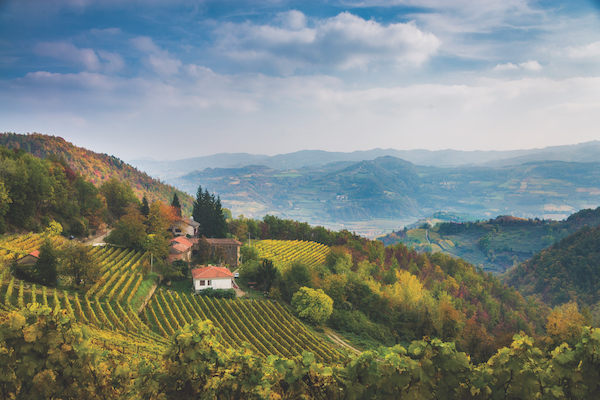
The beautiful south
Southern Piedmont is a small area, but it can usefully be divided into some distinct sub-areas. The best known is Le Langhe, which spools southward from the handsome town of Alba – centre of the world’s white truffle industry. Le Langhe is deservedly famous for its food, wine and rural landscapes. Italy’s arguably best red, Barolo, comes from here. But areas adjacent to Le Langhe are also worth your attention. The Roero is a small stretch to Le Langhe’s northwest. It includes the charming town of Bra, where the Slow Food movement began and still has its headquarters. Northeast of Le Langhe and Roero is the Monferrato area, which spreads north to include Asti and Moncalvo. All three areas have much in common, but there remain variations in their average property prices.
Vineyards and the excellence of their produce can have quite a big effect on the desirability of local properties, and of course on prices. Le Langhe has the highest-rated wines, the greatest effusion of vines, and the highest property prices. Over recent years, as the wines of Monferrato have received greater accolade and become better-known, so the property values of this once low-priced area have risen. Today the lowest prices in the three areas of southern Piedmont are generally found in Roero and in the northernmost parts of Monferrato.
Alex Edwards of Langhe Property says, “Le Langhe is still on the rise. It has always been in greater demand and more expensive than the Roero and Monferrato. Roero is very cheap. I lived in the Roero for 15 years and I love it. It’s a beautiful area with world-class food and wines, stunning views and friendly communities. We have houses in the Roero from €60,000.”
Eli Anne Langen of Case in Piemonte adds that many buyers are investigating northern Monferrato at the moment. “The area north of Asti – Moncalvo and its surroundings – is growing in interest,” she says. “I think this is mostly because the prices there are lower, as it’s a bit outside the main wine districts.” Definitely an area to investigate.
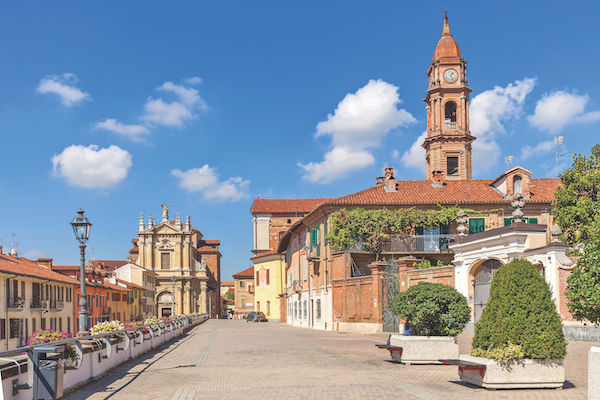
Renting it out
As suggested earlier, Piedmont draws a steadily increasing number of leisure visitors, which is good news for buyers hoping to gather rental income from their home here. Holidaymakers come for Alpine skiing and hiking, for the elegant lakesides of the north, and for gastro-tourism adventures down in the hilly south.
The season for the latter kind of holiday is longer than you might expect, stretching from May to November. Autumn in Piedmont’s south sees the height of the annual foodstuffs calendar, with items such as white truffles in season and splendid times to be had at food festivals in the elegant local towns.
Surprisingly, there is still a shortage of self-catering properties to rent in Piedmont’s lovely south. Plenty of hotels, guest houses and agriturismi are available to accommodate visitors, but there still aren’t quite enough private country houses for travellers who prefer to go it alone. Thus holiday rental prospects are very good down here and you could expect to cover some of your costs by offering holiday lets.
Overall, Piedmont offers abundant reasons to buy a home. Eli Anne Langen of Case in Piemonte sums it up: “You get good value for money in a region that’s bound to increase in value. Tourism is growing, the wines are more widely appreciated, you’re close to the rest of Europe, within reach of several airports, close to the sea and to the Alps, it’s always green, the climate is very stable, and you have the best food and wine in the world!
Useful contacts
Case in Piemonte
ItaliaCasa
Langhe Property
Verde Abitare
For more on the area’s property potential, see our Piedmont regional guide
Piedmont property picks
[slideshow_deploy id=’23498′]
